Did you know that properly organized link building in the US can completely transform your business? By incorporating guest posting as part of your SEO strategy, you can significantly improve your website’s rankings in Google search results. However, it’s important to understand that outreach in the Ukrainian and American markets, while sharing some similarities, requires unique approaches. If you’re looking to expand into the US market, mastering the nuances of link building in the US will help you maximize your ROI and avoid wasting your budget on ineffective tactics.
At Links–Stream, we specialize in website promotion through link building worldwide. With over 7 years of hands-on experience in link placement across the US, our team is here to share our expertise with you.
SEO Website Promotion in the US
Promoting websites in the US comes with specific characteristics that are essential for building a successful business strategy. Here are some key points to consider:
It’s almost impossible to reach the top rankings with a small budget, especially when targeting high–volume keywords. If you’re just starting a project, it’s better to focus on promising low- and mid-volume keywords. At the same time, using paid ads as an alternative to drive traffic can also be expensive.
- High-quality backlinks from authoritative websites remain a critical factor in SEO. For example, a tech startup can improve its rankings by securing backlinks from well-known tech blogs and news portals (which also come with a hefty price tag).
- For effective website promotion, it’s crucial to target specific regions, states, cities, or even neighborhoods. Geo-targeted queries are prioritized in search results (hello, local SEO!).
- For businesses targeting local audiences, local SEO is especially important. For instance, a restaurant in New York should optimize its website for keywords like “best restaurant in New York” or “Italian restaurant in Manhattan.” Leveraging Google Maps is also essential, as its influence continues to grow.
- Voice search is becoming increasingly popular in the US, and websites need to optimize for these types of queries. This means incorporating long-tail keywords and question–based phrases commonly used in voice searches, such as “where to buy fresh organic produce in Los Angeles.”
- A high level of expertise, quality content, and adherence to EEAT principles (Experience, Expertise, Authoritativeness, Trustworthiness) significantly enhance Google rankings, boosting visibility and appeal to your target audience.
As you’ve probably realized, SEO in the USA is both expensive and complex. While these words might not bring much joy to business owners, for service providers, they certainly do! For instance, the average cost of an SEO campaign starts at $3,000 per month, and backlinks can cost upwards of $150 each.
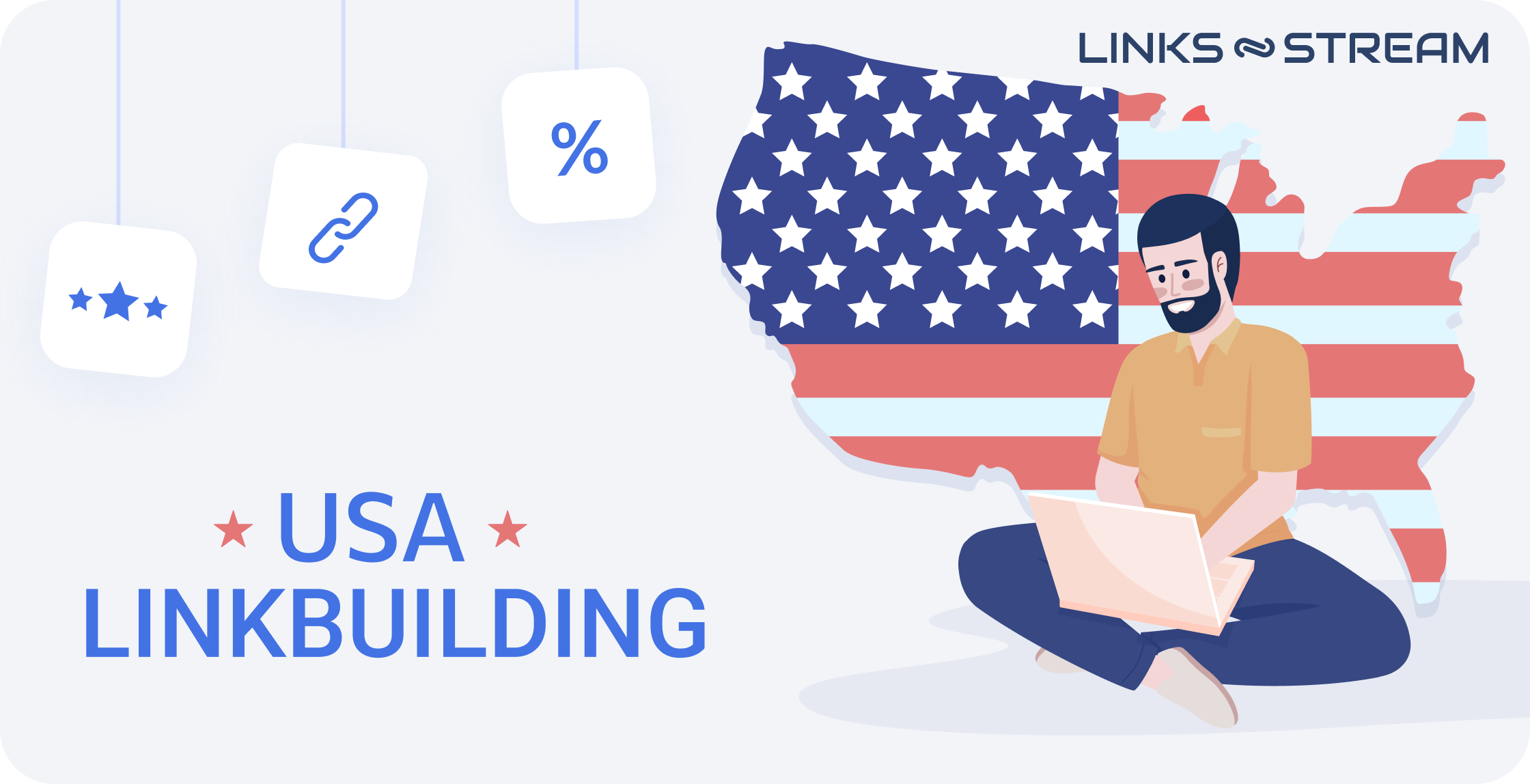
Unique Aspects of Link Building in the US
So, what does link building look like in a market as competitive and expensive as the US, where online projects often require massive investments to generate significant returns? Globally, the US link–building market is recognized as the most progressive, setting trends in Google optimization that influence the rest of the world. Understanding the latest link-building trends in this Tier–1* market allows businesses to adapt their strategies for projects in Europe or Asia, while also applying innovative techniques in regions where they haven’t yet become widespread. This was true for tactics like Amazon affiliate reviews, Xrumer campaigns, PBN construction, and many other strategies.
In any competitive product-related search result, you’ll consistently see players like Amazon, eBay, UBid, and aggregator sites such as Clutch dominating the top rankings–not through backlinks but by leveraging the sheer power of their host domains (i.e., high DR). This insight leads to three actionable strategies:
- Focus on strengthening your domain’s authority as much as possible to compete effectively over the long term.
- Dive deep into informational and low-competition niche queries by creating blog content and optimizing product pages.
- Simultaneously invest in building a PBN or find a high–quality expired domain with valuable backlinks to repurpose with a 301 redirect.
By combining these approaches, you can develop a sustainable strategy to compete in even the most challenging markets.
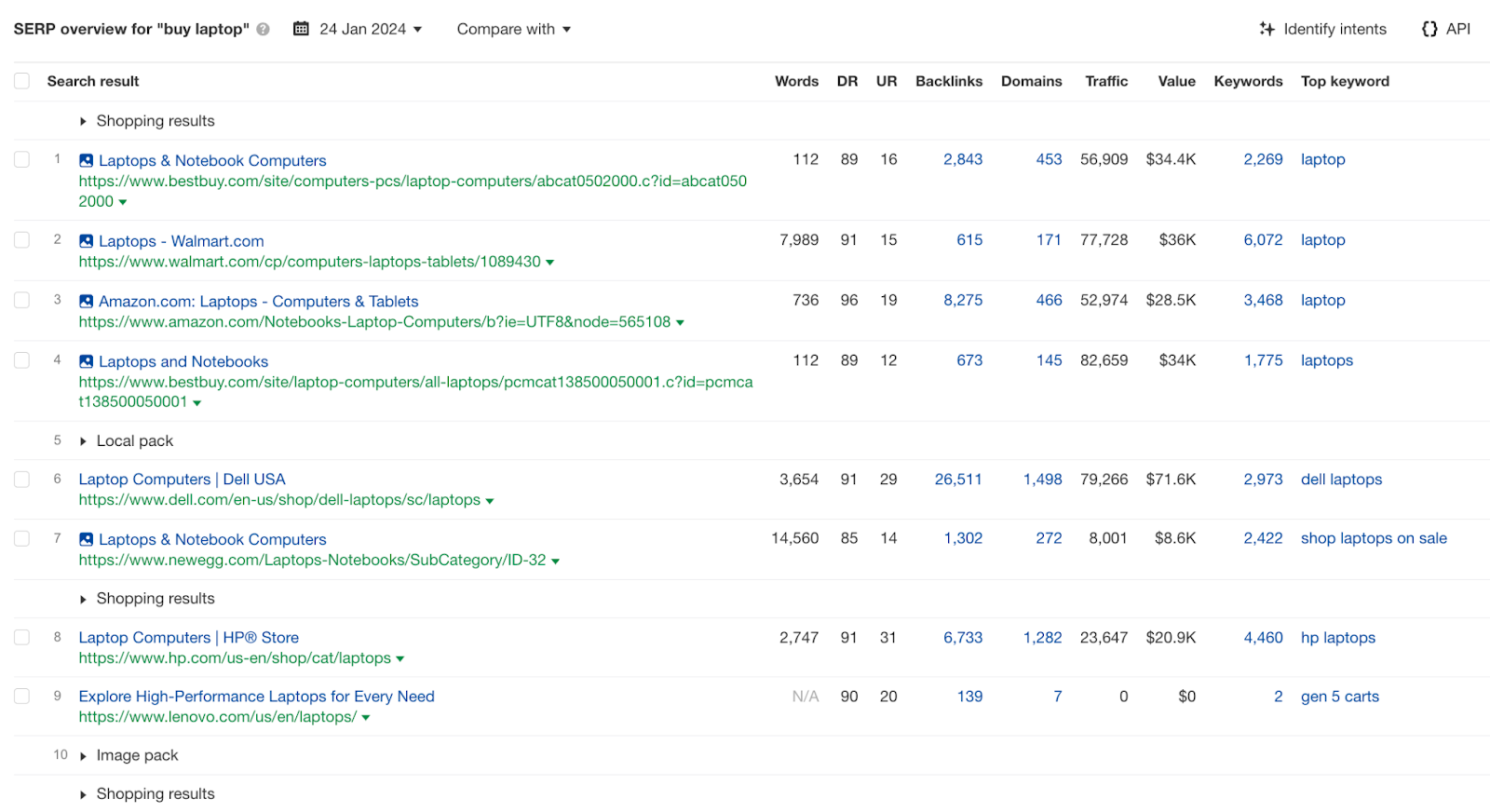
In the US, several search engines dominate the market, with Google leading the pack alongside Yahoo, DuckDuckGo, and Bing. While Google captures up to 90% of search traffic in the US, it’s worth noting that Yahoo holds around 3%, Bing approximately 7%, and DuckDuckGo another 3%. These smaller platforms shouldn’t be overlooked, as they can still contribute to your overall traffic and visibility.
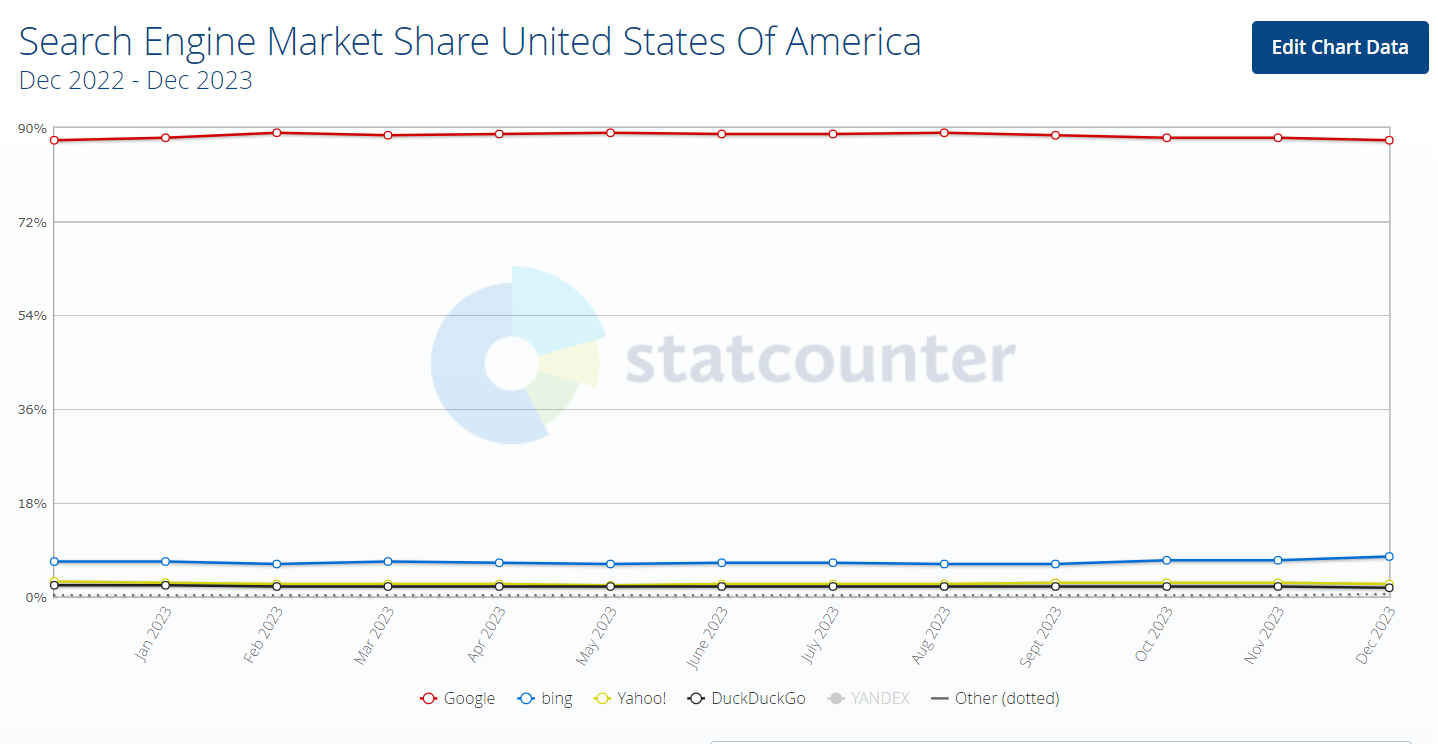
Unlike in the CIS region, the US doesn’t have link exchange marketplaces–primarily because Google actively conducts “test purchases” of links and penalizes such projects through deindexing. Meanwhile, link exchanges in the CIS continue to operate successfully, offering Americans an easy way to purchase links there. In the US, however, link builders typically offer their services on freelance platforms or collaborate within agencies.
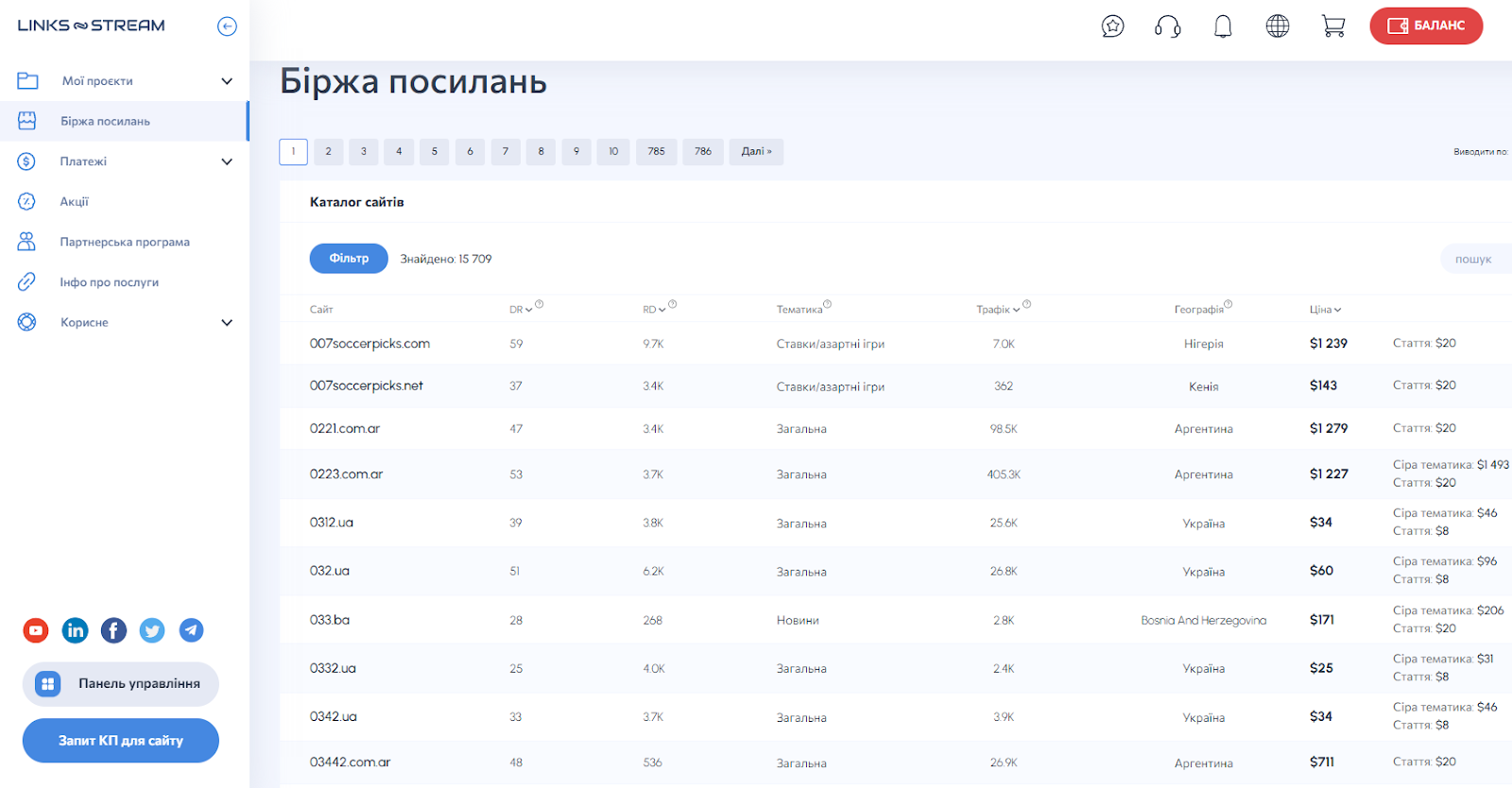
Links–Stream offers a seamless way for Americans to purchase backlinks.
In the US, traditional crowd marketing as understood in other regions doesn’t exist–it’s referred to as “niche links” and isn’t widely used for building a backlink profile. However, Indian webmasters managing US projects without the budget for high-quality guest posts often rely on forum submissions, driving significant traffic through low–competition, long-tail keywords.
Promotion on platforms like Facebook, Twitter, LinkedIn, and other social networks is equally crucial. It’s viewed as a form of link building, as sharing blog article links in niche communities helps attract targeted traffic.
In the US, there’s a strong emphasis on content quality. Even for guest posts, webmasters reject AI-generated articles and stock images, ensuring the content on their sites maintains high standards. This caution stems from concerns about potential Google penalties for generated or low-quality content in the future.
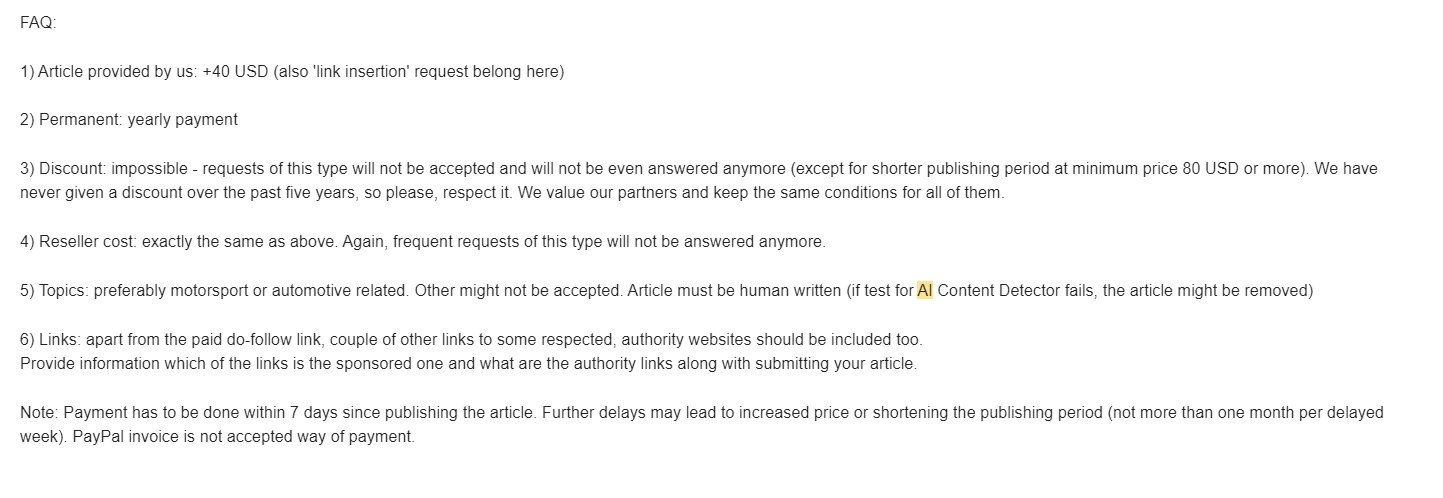
In the US, a country rich in cultural diversity, content localization plays a critical role. For instance, outreach targeting Spanish–speaking audiences in Texas or California requires an understanding of cultural nuances and may even involve communication in Spanish.
Among multilingual websites in the US, approximately 17% offer Spanish-language versions, followed by French at 16%, and German at 8%.
Additionally, some webmasters in the US impose strict quality controls, such as verifying submitted articles using AI Content Detectors to ensure originality and authenticity.
Our Experience in the US Market
The US was the first region we entered, and it turned out to be a fantastic choice due to the consistently high demand. The outreach market in the US is truly unique–not just following trends but creating them. It’s the kind of market that sets the direction for how outreach strategies evolve in other regions.
Of course, our experience might differ from yours. Every region and niche has its unique characteristics. That’s why it’s crucial not to simply replicate successful strategies from one market but to adapt and explore what works best for your specific situation.
What Makes US Outreach Unique
In recent years, more and more websites in the US have stopped accepting simple link placement requests. The approach to webmasters has shifted from long, polished emails to short, direct messages like, “Hey, can I be mentioned here?” Modern guest posting demands much more effort. Securing a link from high-quality donors requires expert-level content that delivers real value.
Outreach in the US is evolving at a breakneck pace. Automated guest posting tools are already widely used, and the market is highly saturated. In some cases, you’ll need to navigate HARO (Help a Reporter Out) queries, which adds another layer of complexity to the process.
While the US market may appear more open and accessible, with a large number of websites and quick responses from webmasters, don’t let that fool you–it’s still a challenge. You must be ready to face new obstacles, especially when negotiating prices or discounts. US webmasters generally don’t engage in lengthy negotiations. They value their time and respond quickly, so speed and precision are critical to success.
4 Insights from Links-Stream:
- In certain niches, especially in “gray” areas, publishing content can be challenging due to state-specific legal restrictions and high quality standards. Access to quality platforms for content placement is either limited or completely unavailable.
- Working with webmasters in the U.S. tends to be much more effective than in other regions. Many of them manage dozens of niche websites, which simplifies the search for suitable platforms and allows for bulk discounts (around 10%). Prices for gray niches are typically double the standard rates, and discounts are rarely offered–especially in industries like gambling.
- Reaching out to webmasters via social media is a common practice. Platforms like LinkedIn and Facebook often yield the best responses from site representatives, while other messaging apps tend to be viewed as more personal and private.
- Selling guest posts from sites with poor SEO metrics is considered unprofessional. Donor sites with a DR (Domain Rating) below 20 are seen as weak and typically sell for only a few dozen dollars. Reputable webmasters usually aim to improve their DR to at least 30-40 to compete in the link-selling market
You can learn more about guest posting in the U.S. by watching our webinar on our YouTube channel:
Pricing
For white-hat niches, prices start at $50, but for casino–related sites, the cost is typically twice as much. The primary payment method for transactions is PayPal, as it offers the option to file a dispute and recover funds if the webmaster turns out to be fraudulent and fails to publish the guest post. Payments via cryptocurrency or bank transfers are rare.
The cost of guest posts in the U.S. varies significantly and doesn’t always depend on a site’s DR (Domain Rating) or traffic. For instance, websites with a DR of 70 or higher often have unique pricing structures influenced by factors like the site’s reputation within its niche and popularity among its target audience. In some cases, link prices can reach disproportionately high levels.
To better understand guest post pricing in the U.S., let’s look at a few examples. A site with relatively low DR and traffic, such as renovation-headquarters.com (DR 31, traffic 8,558), might charge $110 for a guest post. On the other hand, a high-DR site like e-architect.com (DR 73, traffic 23,735) offers a similar price of $100. Meanwhile, a popular niche site like www.russh.com (DR 69) charges an astounding $3,000 for a guest post.



It’s important to understand that a high DR doesn’t automatically make a site a good choice for buying a link. Based on our experience, sites offering links for $100 with a DR of 70 should be carefully scrutinized, as there are several potential reasons for such attractive pricing:
- Artificially inflated DR: The site’s DR may have been boosted using low-quality donor links, which means the link won’t benefit your site and might even harm it.
- Too many outbound links: If a site has an excessive number of external links (check the “Linked Domains” report in Ahrefs), the link equity passed on will be minimal.
- Scams: If the site itself seems legitimate, the person offering the link may still be a scammer unaffiliated with the project.
Email Outreach Tips
Working with webmasters in the U.S. tends to be more straightforward and faster, especially in niches like gambling. However, crafting the “perfect” outreach email template doesn’t always guarantee success. Be prepared for rejections, and avoid pushing for follow-ups if your initial request is denied.
Using GPT-powered tools and effective prompt engineering can help craft concise, professional emails that resonate with webmasters. This is especially valuable for large agencies managing multiple niches across different regions.
Check out our blog for tips on writing outreach emails that don’t get ignored, complete with examples of effective GPT prompts.
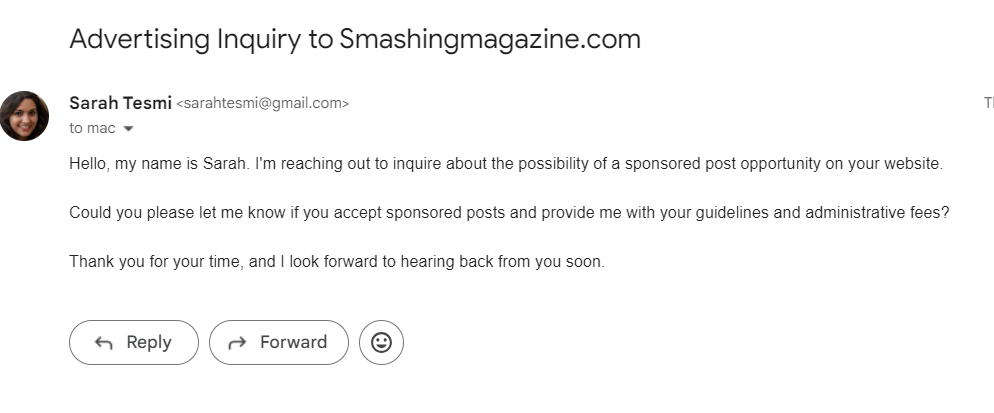
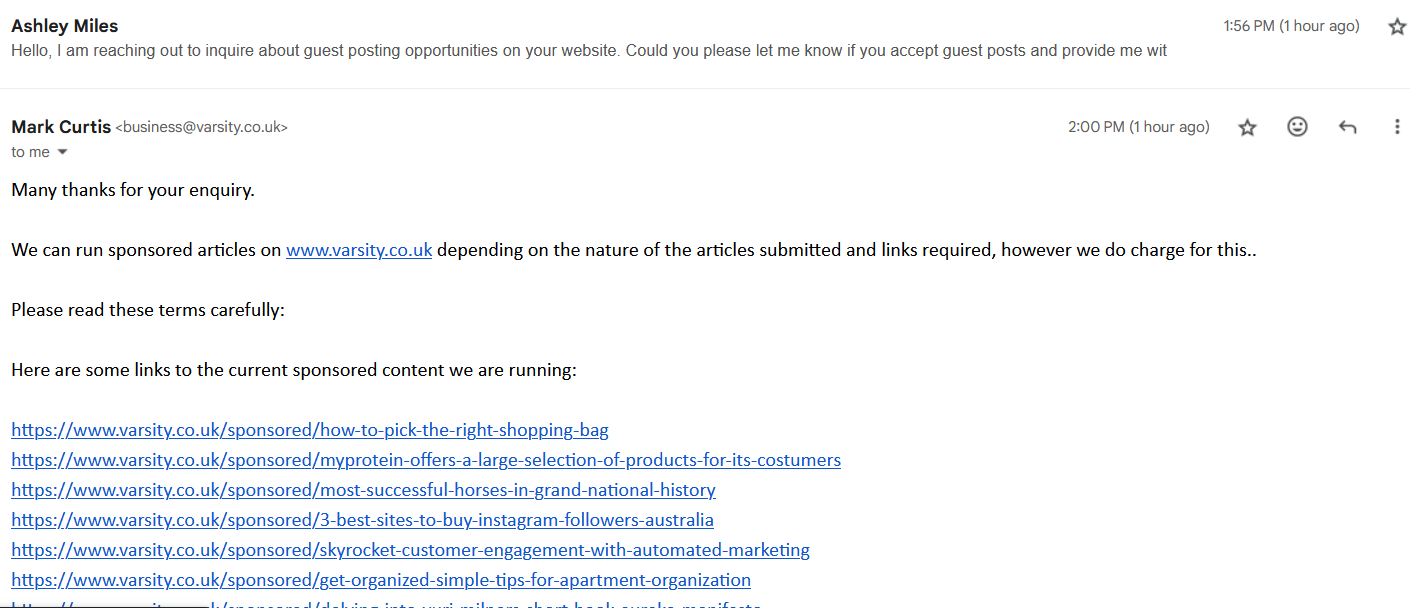
Links-Stream case study: website promotion in the USA
In 2023 we worked on Coffeshop project in the USA for 4 months in a row. Our client, a growing and smoking accessories store, decided to move to the top of Google’s top rendition and take a big part of the market.
In the competitive niche of marijuana and smoking accessories stores, especially in the US – a country where the sale of these substances is legal – expert guest posting with reviews-comparisons of varieties and their purpose proved to be an effective strategy. Highlights include a traffic increase of about 10%, or plus 4,000 users, and a 60% jump in keywords. We believe that this result was achieved precisely because of the interesting topics of the guestposts 🙂
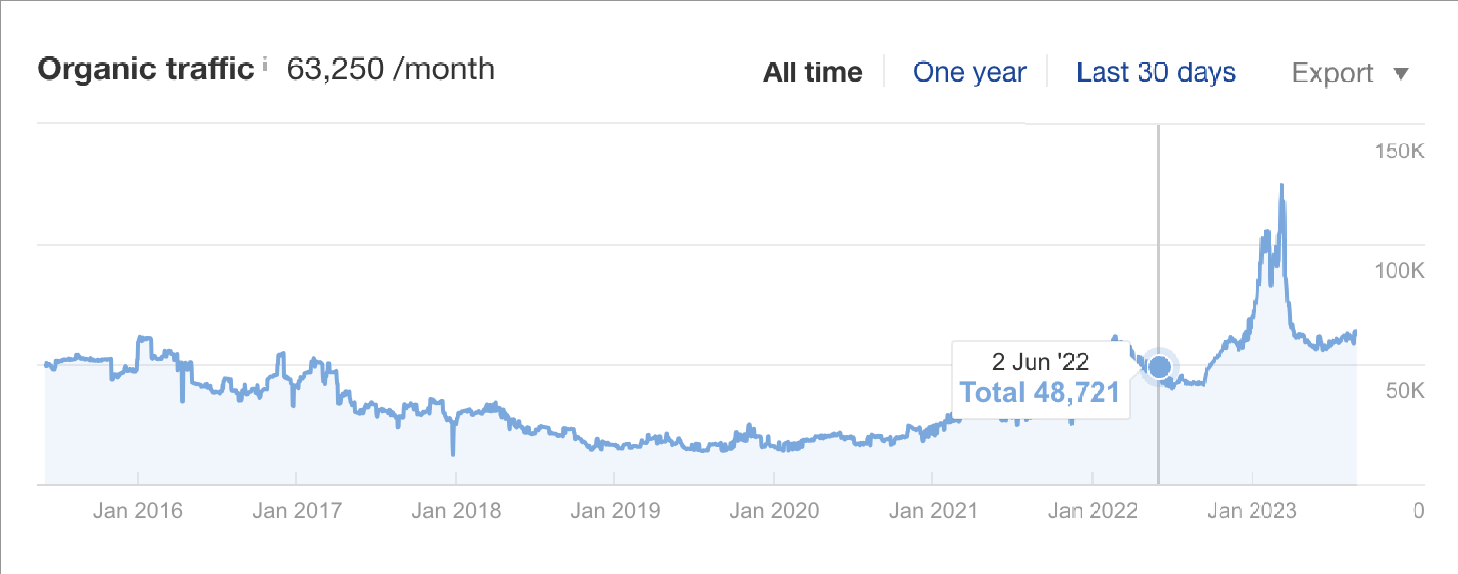
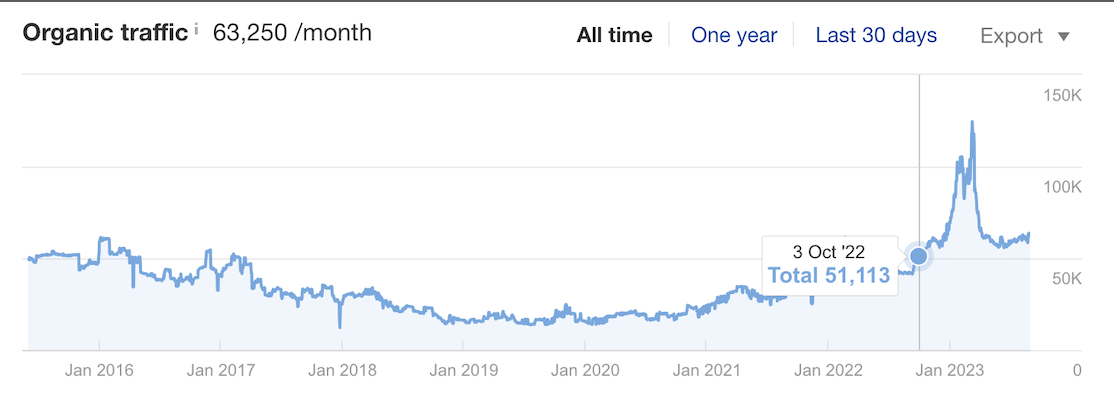
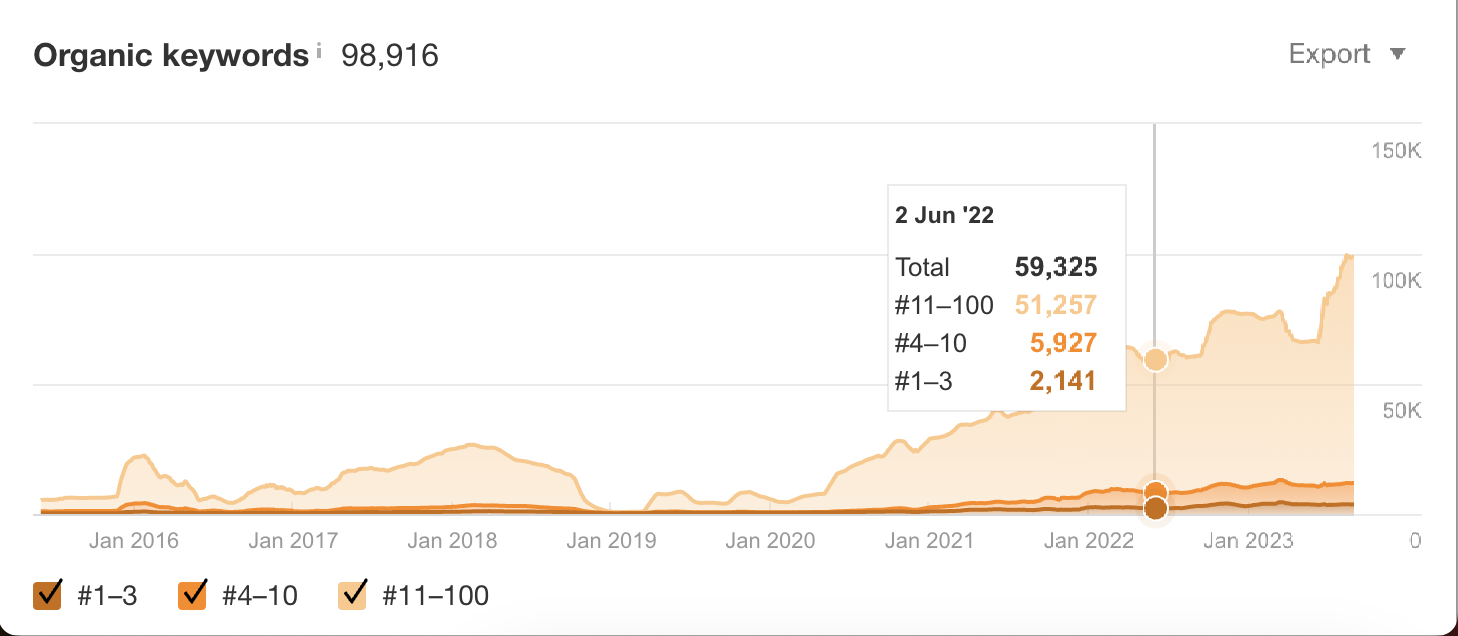
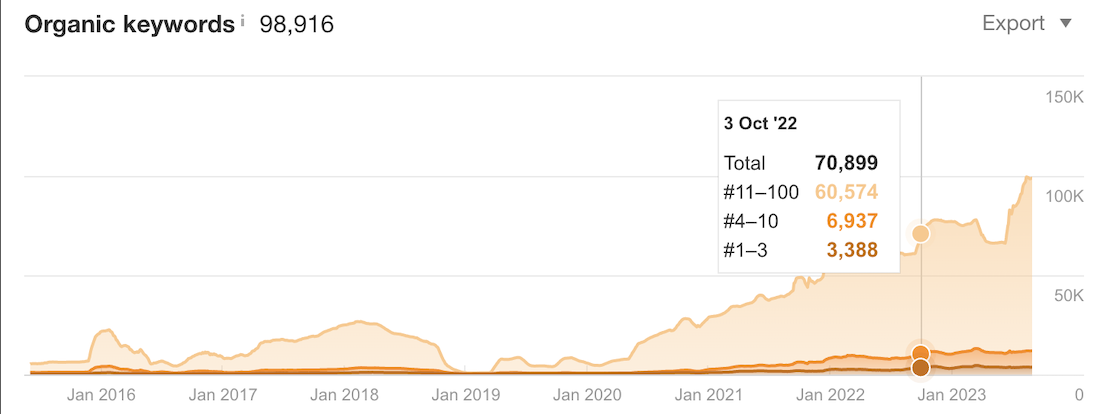
Guest Posting Statistics in the United States in 2024
- Around 60% of guest posts are published on websites with a domain rating (DR) of 60 or higher.
- Guest posts that are over 1,500 words typically receive significantly more engagement on social media. Specifically, they get 68.1% more tweets and 22.6% more Facebook likes compared to shorter posts
- Approximately 80% of blog visitors are new and are most likely arriving via organic search or through guest post placements.
- When guest posts feature content from thought leaders or influencers, social media engagement can increase by up to 60%.
- Companies that maintain blogs see 97% more inbound links, with a significant portion of these links resulting from guest blogging efforts.
- Regularly updating old blog posts by adding fresh content and new keywords can dramatically improve SEO and reader engagement.
Longer blog posts, particularly those exceeding 7,000 words, tend to receive the highest number of shares on social media. - Frequent blog posting–ideally four or more times a week–can drive significantly more traffic compared to less frequent posting. Daily blogging is linked to a 128% increase in reports of major successes and achievements.
- Successful bloggers are known for actively promoting their content. About 70% of prominent bloggers engage in active blog promotion, including sharing links on social media and guest posting.
- Bloggers who conduct their own research and provide original ideas are more likely to achieve strong results, as this adds unique value and authority to their content.
Frequently Asked Questions
What is your content editing and approval process?
When working with U.S.– based clients, it’s crucial to consider their approach to copyright and the article approval process. Collaborating with AI detectors can also be challenging since different tools often yield varying results. It’s important to clarify with each client which standards or tools they rely on for content evaluation.
What tools do you use to filter out low-quality donor sites in bulk?
For large-scale filtering of low–quality donor sites, we recommend using parameters like Referring Domains and Linked Domains, with extra attention to domains that are blocked from bots like Ahrefs. This automated approach helps eliminate undesirable sites efficiently. Additionally, reviewing metrics such as the inbound-to-outbound link ratio and traffic can further refine the filtering process.
What’s the most effective way to publish articles on high-authority platforms: direct outreach or via contributors?
Leveraging contributors is often the best approach if you already have established connections with editors. This strategy bypasses editorial policy restrictions and opens up more link placement opportunities. Choosing the optimal method requires a deep understanding of the platform and its editorial processes.
Is link exchange allowed if a site declines to sell a guest post?
Link exchanges are possible but should be limited to no more than 5% of the total links to your site. Google penalizes sites for frequent link exchanges in guest posts. However, you can conduct such exchanges on a Partners page–keeping the quantity reasonable and natural.
Conclusion
At Links-Stream, we continually evolve and approach each new market as if it were our first exploration. We view outreach as an art, not a routine task, carefully analyzing every nuance–from client requirements to cultural specifics–to ensure optimal results.
Key Takeaways on Guest Posting and Website Promotion in the U.S.:
- The U.S. market is known for its high demand for guest posts and sets trends for other regions in terms of modern methods and client service standards.
- In this region, quality outweighs budget when it comes to purchasing links. Leading websites often require high-quality content rather than simple paid placements, and low-quality or obviously generated content is frequently rejected.
- There is a growing trend toward using platforms like HARO (Help a Reporter Out), where the focus is on providing expert-level content to earn high-quality links from authoritative websites.
- Certain niches, particularly those considered “gray areas,” may have restricted access, and top sites in these niches are often closed off to guest posting.
- Many U.S. webmasters have built their businesses around creating sites specifically for guest posting, which can make the article placement process more straightforward in many cases.
- Payment methods typically include PayPal, with cryptocurrency and wire transfers used less frequently.
- Some topics, such as gambling, face more restrictions due to state laws or webmaster preferences.
- Although discounts are sometimes available, the U.S. market is generally less receptive to constant price negotiations.
If you have any questions about using guest posts for promotion in the U.S., feel free to reach out for a free consultation.
You can also learn more about link building and website promotion on our Telegram channel: In Links We Trust.
